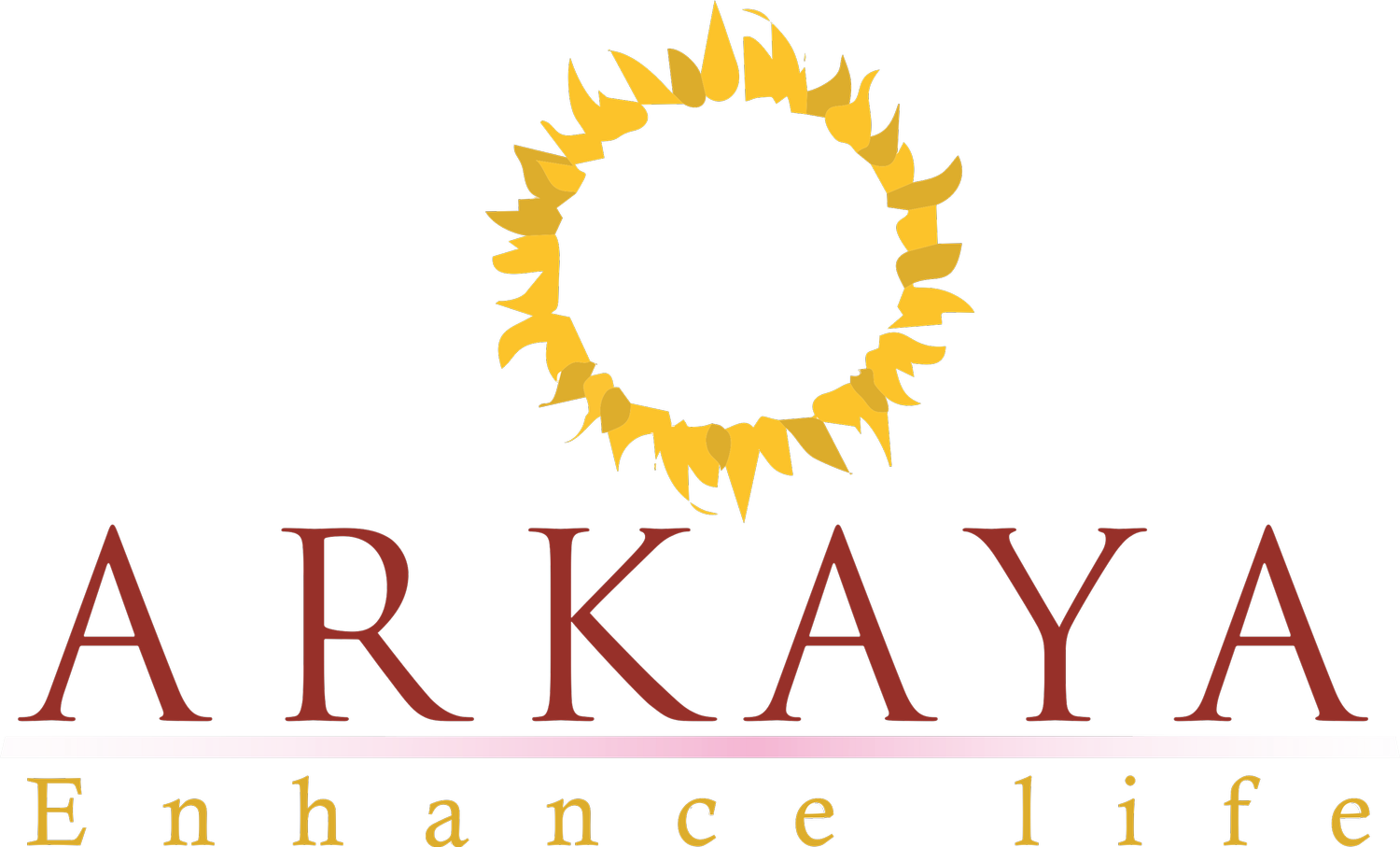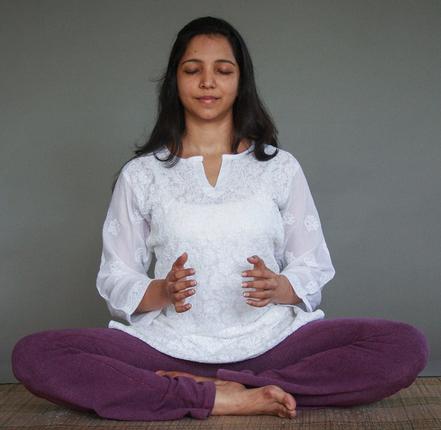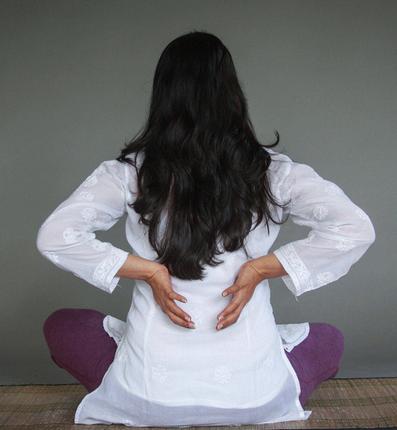Where does one go in the wilderness? In a concrete jungle, the latest spiritual workshop gets a herd following. I do appreciate guidance from those around, but a dependency on any is far from what I had in mind. Which one of these stores, oops! Workshops are going to help me find the way?
I was a spiritual window shopper. Not that I wanted anything in particular-didn’t even know what I was looking for. I attended a few workshops as they were recommended. I was already spiritual (in workshop sense). I knew I was connected to something bigger than my personality, but I was more concerned about my ground realities. How do I find balance in my relationships? How do I become emotionally expressive, or street smart? How do I deal with the manifest world? How do I relate to money and power? How do I bring higher concepts into my body and emotions, not suppress or fight them, but have them work in harmony. That was my spiritual quest.
My film making/advertising lifestyle was gnawing at me and I wanted OUT! I knew if I worked the way I did, I would not age gracefully, and end up with some money and a sour spirit. I had seen many in my family who were great achievers, extremely intelligent and well read, but who were emotional fools. I definitely did not want to head that way.
Oh God, where will I find a place that will train me and help me grow? Who is going to guide me without wanting to control my life/ who is going to help me deal with how to become a better and more skilled individual…. To help me work with my body, my emotions and mind? Who is going to help me unlearn a lot of the dysfunctional patterns I had picked up, make me get more assertive and help me have a deeper understanding of myself? Who is going to show me the way?
What I was looking for was a Guru without knowing it.
I had never thought of myself as spiritual. I rarely attended church or went to temples. No one but mom went to church anyway. So I did not feel too guilty about it. Whenever a wave of guilt was passed on from mom to me, I’d land up in church and later have some lighthearted fun about the boring sermons. Was not Jesus, whom I loved and trusted, supposed to save and deliver me? I asked his Mom to find me a place to learn. And she did! Mother Mary passed the message to me during a Reiki meet. George Kurian at the meet told me vaguely that there was some place in Pondy that teaches yoga and since I was looking for centers, I could also check this one out. I landed there, and that I had been guided was clear to me. Surrender saw me through. When the intention is strong then the way is automatically cleared.
My trainer at the ashram, Amma or Meenakshi Devi, called herself an acharya.. She explained the difference between a guru, acharya and a teacher. When we left the course we would be acharyas. A teacher teaches without the subject having any impact on one’s life. A teacher could teach physics or maths or aerobics and it was something they did for a living, maybe even loved, but nothing beyond. An acharya had to be much more than a teacher, Yoga had to be in one’s blood and bones. An acharya had to walk the path, not teach it like a subject, but live it. Hmm!! I decided then that I was going to go back to advertising. Teaching was not something I wanted to seriously take up. And yet, my desire for growth materialized in life, making me an acharya. Every time I teach, it is a re-enforcement for me, a reminder of my evolution.
Amma was there to guide us, without making us dependent on her. The teachings were provided to help us understand ourselves better and see the different stages in evolution and the quirks in human development. Aha!! So the emotions come from the animal brain, it was not just my problem but the problem of the whole human race. That felt a lot better already. The awareness inculcated the day-to-day observations, and the lifestyle got rid of a lot of what I did not need. Amma, at every step, warned us of the possible potholes to watch for, if in our enthusiasm we drove too fast. Yoga is balance. It is not competition or achievement oriented. The questions, doubts and the low moments that one went through, she warned us of, and I was able to observe my own fickle mind. Whatever we needed for our refinement and our growth, she provided us with. We of course had to utilize it. As one who was walking the path herself she told us of the detours, how sometimes it could be an up hill task-one step back and two steps forward. Yet we had to diligently row up the stream.
Amma was a spiritual mother who helped the child take his first few steps and stayed beside. Happy to have a few aware children, than a multitude of cattle, she guided us through the classes that were a framework for our lives. If we put in effort, we needed to learn to let go of it. Do our best and leave the rest. She provided many instances where we could understand ourselves and relate to others harmoniously. Amma in a lot of ways was a channel of the guru spirit. But she reserved the word for a very evolved soul. Nowadays, every new kid on the block is called a Guru. Right from management gurus to style gurus to the street-smart gurus, there seems to be an influx of them. The intensity of the word is not understood.
The word Guru means dispeller of darkness. By shining the light of self- knowledge, the guru helps us see those aspects that we are hiding from; recognize the universal potential within us.
Swami Geethananda is the guru in the paramparya (lineage) of Rishi Brigu. He was a channel for the supreme consciousness. If his students hung on to his personality, he trampled it. If the student was hung on the personality of the Buddha he ripped the Buddha apart in class; he definitely was not your popular candyfloss, all smiles Guru. He was not attached to his image. If the student still idolized him he’d burp and fart loudly in class. Gurus are supposed to be perfect; they should walk on air and look like they came straight out of a commercial. Or the guru should have “peace” painted on his face and make the student sing or chant all day in ecstasy. The student’s conception of the Guru was formed to fit into his world. The world he had created in his head had to be intact. If a guru threatened it then he was not a guru.
The guru spirit that manifested through Swami Geethananda helped break that which the student held on to; be it a belief or the ego. What came through him for that particular moment for that particular person was given. He was all that life needed him to be at that particular moment, especially, when his students need to grow. Each needed different treatment. Each according to their vasanas or conditioning needed to have some belief system shaken out of his/her head. If the student was tamasic (dull, inert) he had to break the Tamas, if they were Rajasic (restless) he trained them to become satvic (alert, still). He would shout at his students saying they had “spinal cord mentalities”. He did not even credit them with using their brains! If Einstein used only 6% of his brain how much are you using, he would ask. He wanted them to grow, and in a controlled environment, worked their karma out for them. By giving them knowledge of the true self he opened their minds. By allowing them to experience themselves he opened up the cosmos to them.
So does each one of us go looking for a guru? Even if there was an evolved Master, do we want to work on ourselves? Do we really want awareness, or are we attached to some silly fantasy of what awareness might be? When the student is ready, the teacher appears.
Swamiji never gave anyone sanyas (except one). To cultivate a harmonious family in a yogic way was to be the sadhana of all his students. He was a tough taskmaster and made it even more difficult by not having an organization. He wanted us to go out and create our own oasis. We had to create our own yogic space in the midst of bhoga (solely seeking sensory gratification). He was like the ferryman helping us cross over, guiding us to get in touch with our inner Guru. We have to help ourselves find the way.
A Guru is the vehicle that takes us closer to the divine. But he does become personal, and like with a father, an attachment is natural. But it is important to see that attachment. Not condemn all other fathers because they are not our own. Or form clans instead of embracing the universality of yoga.
Swamiji was a symbol for the guru spirit. He had purified himself and was a pipe or channel for whatever had to flow through. It might have been tinted with his personality but it did not originate there. All of us have a rigid conception and experience of the world and ourselves. Anything that threatens that image could never flow through. If we are non-confrontational, then, even if a situation requires it, we never address it, but push it under the carpet. If we are short tempered or insecure then we feel defensive, even if the other person did not mean to put us down. Yet we want to improve the quality of our lives. That’s why we have internal conflicts that manifest as external conflicts.
The people in our lives serve as a vehicle for the Guru spirit. Each of them reflects parts of us. Which part, has to be figured out. Life is constantly giving us messages about ourselves. Are we attentive and alert? Do we find ourselves in the same situations again and again? Do we find the same people triggering the same reactions? Do we allow the will of the divine to manifest through us? Do we notice our blocks? Do we listen and are we present to what is happening? Are we aware of the Guru Spirit that flows through life? Or are we sleeping, too busy when our guru is knocking at our hearts.
I offer my gratitude to Swami Geethananda and Guru Patni Meenakshi Devi for raising the consciousness of many including myself. Pranams to Dr.Usui and all the ascended master for guiding me. My love to Christ and Mother Mary for giving me such a blessed life.
Time For Gnyana
Yogic Awareness:
When we procrastinate,tension builds up. As the deadline nears, the rush of adrenaline propels us to act. Energy is lost if decisions are delayed and the conflict and worrying saps one of prana or life force. Any good manager is also a good decision maker, who keeps in mind not only his own well-being, but also that of his team.
The Technique:
Sit comfortably with spine straight on the ground in padmasana or on the chair. Let the tips of the index and thumb touch each other forming a nice circle. The other three fingers are together,straight and stretched out. Place the hands on the thighs with the palms facing upwards. Focus on the area between your eyebrows.
If you find yourself unable to focus or agitated, then do the simple cleansing breath that we saw last fortnight. Then you can practice the gnyana mudra for 3-5 minutes. Intend that whatever decisions you take will be in accordance with natural laws.
Yogic Concept:
The index finger signifies the ego. It is the finger that points,separates, threatens and indexes. The ego is a necessary step in evolution where we experience our individuality as well as separation and one must consciously transcend it to find oneness.
The thumb stands for universal consciousness. In the gnyana mudra , we are uniting the ego finger with the fire of consciousness. This gesture with our hands sends a signal to our sub conscience to behave in accordance with the natural/universal laws. The other three fingers signify the senses, which are disciplined by the intellect.




